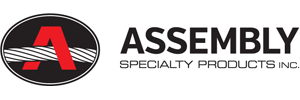Hoisting and Rigging Standard
Preventive Maintenance
- A preventive maintenance program shall be established and based on the recommendation of the crane manufacturer. If equipment maintenance procedures deviate from published manufacturer’s recommendations, the alternate procedures shall be approved in advance by the manufacturer or another qualified person and be kept readily available. Dated maintenance records should be kept where readily available to appointed personnel
- Replacement parts shall be at least equal to the original manufacturer’s specifications.
- All moving parts of the crane for which lubrication is specified shall be regularly lubricated. Lubricating systems should be checked for proper delivery of lubricant. Operators and maintenance personnel shall follow the manufacturer’s recommendations as to the points and frequency of lubrication, maintenance of lubricant levels, and types of lubricant to be used
Maintenance Procedures
- Before starting adjustments or repairs on a crane, maintenance personnel shall take the following precautions as applicable:
- Place the crane where it will cause the least interference with other equipment or operations in the area
- Lower the lower load block to the ground or otherwise secure it against dropping
- Lower the boom to the ground, if possible, or otherwise secure it against dropping
- Place all controls in the OFF position and secure all operating features from inadvertent motion by brakes, pawls, or other means
- Ensure starting means are rendered inoperative
- Stop the power plant or disconnect it at the power takeoff
- Relieve hydraulic oil pressure from all hydraulic circuits before loosening or removing hydraulic components
- Warning or out-of-order signs shall be placed on the crane controls. Signs or flags shall be removed only by authorized personnel
- After adjustments and repairs have been made, the crane shall not be returned to service until all guards have been reinstalled, trapped air has been removed from the hydraulic system, safety devices are reactivated, and maintenance equipment is removed
- For locomotive cranes:
- Employ blue flag protection on each side of the crane (except dead ends)
- Place derails not less than 50 ft from the crane on each side (except dead ends)
- Allow only authorized personnel to remove warning signs, flags, and derails
Wire Rope Maintenance
Personnel using wire rope shall ensure proper care by doing the following:
- Store rope to prevent damage or deterioration
- Unreel or uncoil rope as recommended by the rope manufacturer and with care to avoid kinking or inducing a twist
- Before cutting a rope, use some method to prevent unlaying the strands. Heat-affected zones of flame cut wire rope shall not be allowed to bear load
- During installation, avoid dragging the rope in the dirt or around objects which will scrape, nick, crush, or induce sharp bends in it
- Maintain rope in a well-lubricated condition to reduce internal friction and to prevent corrosion. Ensure that lubricant applied as part of a maintenance program is compatible with the original lubricant. Consult the rope manufacturer when in doubt. Lubricant applied shall be of the type that does not hinder visual inspection. Those sections or rope that operate over sheaves or are otherwise hidden during inspection and maintenance procedures require special attention when the rope is lubricated
- When an operating rope shows greater wear at its ends than on the remainder, its life can be extended (in cases where a reduced rope length is adequate) by cutting off the worn end, thus shifting the wear to different areas of the rope

